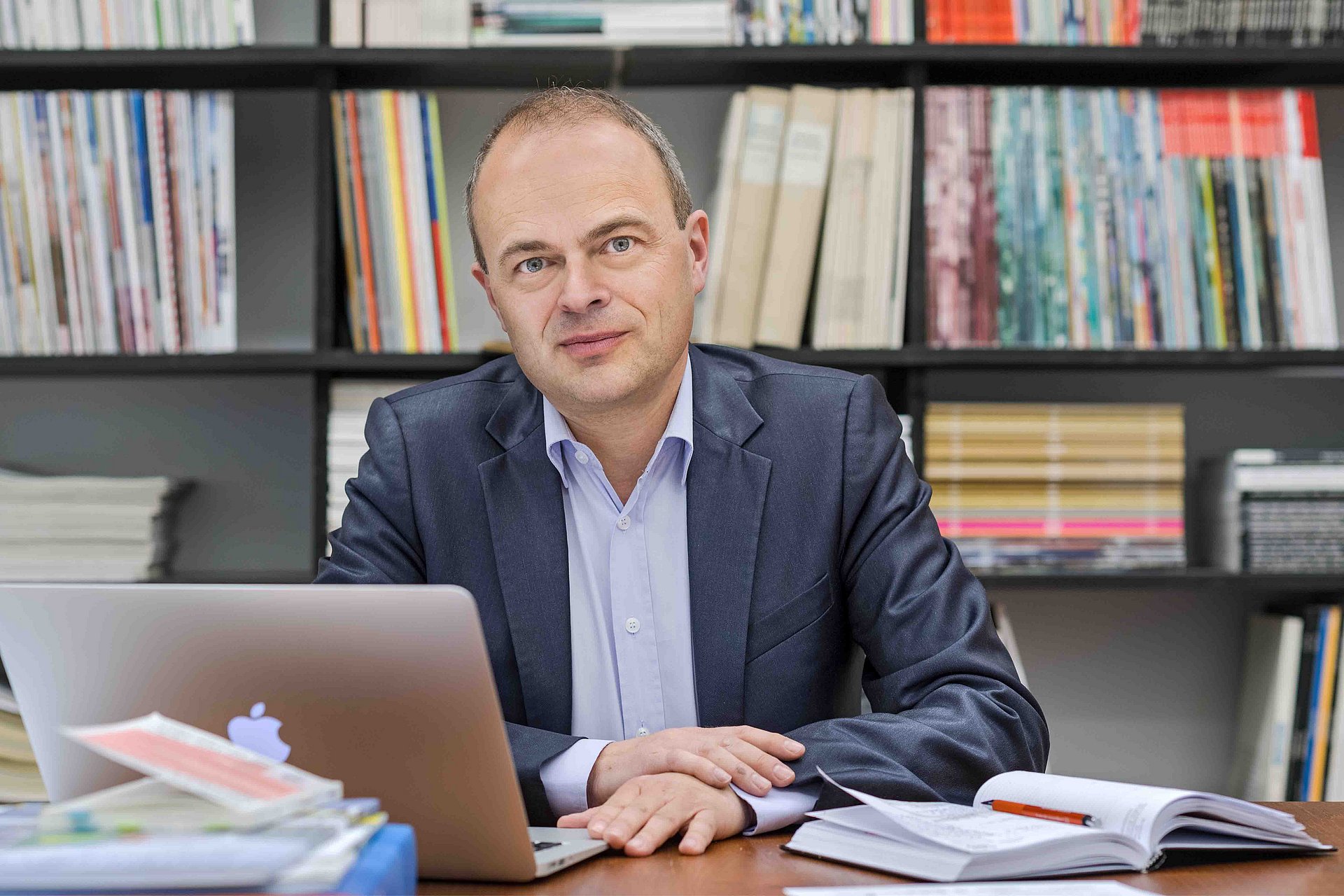Interview with Prof. Stephan Trüby, Professorship of Architectural and Cultural Theory
"Architecture is the tip of the iceberg"

As a professor for Architectural and Cultural Theory, can you tell us about the relationship between these two fields?
Stephan Trüby: Architecture is probably the most complex cultural technology that humankind has produced. Properly understanding architecture requires precise consideration of the context in which a building has taken shape. Political, economic, artistic considerations all play a role, as do science and technology. Architects are faced with the daunting challenge of acting to create buildings in the context of this broad spectrum.
In your current research project you're investigating the influence of the economy on architecture.
Trüby: Money rules the world, as we know, and that also applies to architecture. At the same time, money is almost entirely excluded from official discourse on architecture. There is – as we so often hear – the good side, architecture, as opposed to the bad side, economy. The objective of our research "Global Economy and Architecture" is to gain an understanding of economic thinking as the basis for architectural production and theory. We're studying cities like Munich, Frankfurt, London, New York, Tel Aviv, Moscow, Dubai, Abu Dhabi and Singapore. We're interested in how various international financial movements in the period between 1973 and 2016 have shown and still show architectonic effects in regional contexts. To us, architecture is only the tip of the iceberg. Under the visible portion, beneath the surface, to pursue the metaphor further, we find finance models, debts, hedge funds, investment funds. By looking at architecture from this economic point of view we hope gain a better understanding of what is built.
What developments in the financial sector are evident in buildings?
Trüby: One example: In the past, bank buildings were part of those structures in the urban landscape which appeared the most stable and secure. In the meantime buildings with a slant are almost taken for granted. One example here is the new building for the European Central Bank in Frankfurt. Suddenly entirely different expectations are attached to bank architecture from those of the past. And this is no coincidence, there are clearly visible patterns. People are apparently gradually getting used to the idea that money has something to do with instability. This would have been inconceivable 50 years ago.
In 2014 you were Co-Curator of the main exhibition "Elements of Architecture" at the Biennale in Venice. What is the idea behind this topic?
Trüby: "Elements of Architecture" was a mixture of research and exhibit. The Dutch architect Rem Koolhaas, Director of the Architecture Biennale 2014, initiated the project. The idea of the research project was to take a selective look at architecture: At individual elements such as the corridor, the roof, the stairs, the facade, the door, the window and so on. The result is a total of 15 publications, each dealing with a separate respective element. This year we'll be combining them in a single large volume.
Which aspects of the architectural elements did you handle?
Trüby: On the one hand we're interested in the history of the elements, for example the question of the role played by the roof in traditional Chinese architecture. But we're also interested in future developments. Here we've realized that almost all architectural elements are currently undergoing a digitalization process. Take heating, for example. In our exhibition and the accompanying publication we report on the company "Nest", a thermostat vendor founded by former Apple employee Tony Fadell. A couple of years later he sold the company to Google for a very large amount of money. All of a sudden the questions arose: Why is Google so interested in thermostats? Could this be a way of making digital inroads into our living rooms in order to collect data on our heating and residential habits? It will only be a matter of time until all architectonic elements have become part of a digital network.
Can you offer a prediction about the future for architecture in general?
Trüby: Many of the things that we used to take for granted – just think of the EU, for example – have suddenly become incredibly fragile. These phenomena will certainly have an impact on architecture. In history it has always been the case that politically turbulent times resulted in turbulent and radical architectural attitudes. Having said that, I expect something similar for the present as well as the future.
Highresolution pictures:
Contact:
Prof. Dr. Stephan Trüby
Technical University of Munich
Professorship of Architectural and Cultural Theory
stephan.trueby@tum.de
+49 (89) 289 - 23320